Creative Ways to Display Art in Small Spaces
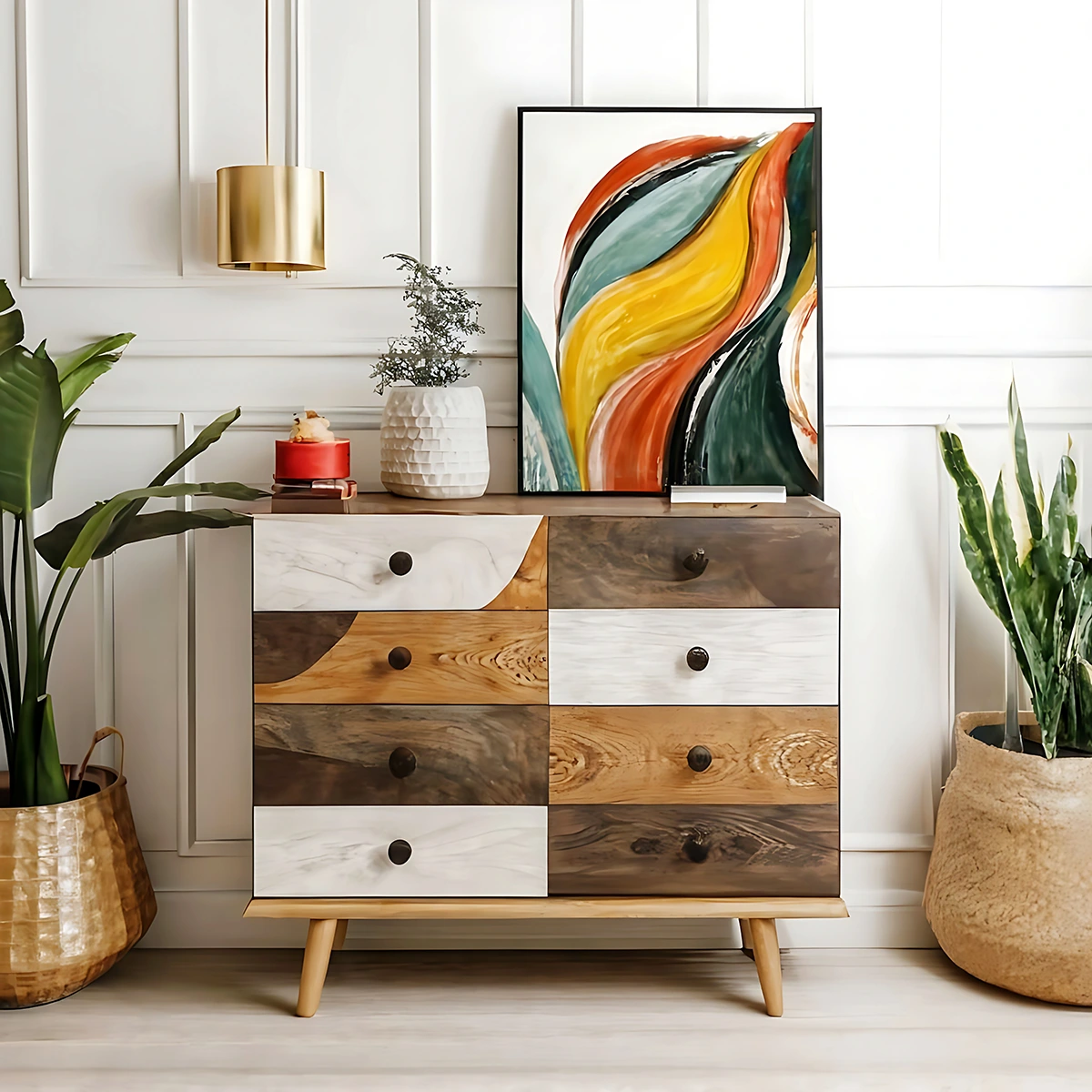
Creative Ways to Display Art in Small Spaces
Living in a small space doesn’t mean sacrificing style or artistic expression. Whether you’re an urban dweller, renter, student, or simply someone with limited square footage, your compact home can still showcase meaningful artwork that reflects your personality. The key lies in getting creative with how and where you display your favorite pieces. Modern solutions have made it easier than ever to incorporate beautiful artwork into even the tiniest of spaces, transforming them into personalized galleries that speak volumes about who you are.
In this guide, you’ll discover innovative approaches to art display that go beyond traditional wall hanging, clever ways to utilize overlooked spaces, flexible solutions that adapt to your changing needs, and smart strategies for lighting, layering, and storing your art collection. With these creative techniques, you’ll maximize visual impact while minimizing spatial requirements in your cozy home.
Rethink the surface – beyond walls
When space is limited, thinking beyond traditional wall hanging opens up countless possibilities for displaying your art. Walls aren’t the only canvas for showcasing your favorite pieces—consider all the surfaces in your home as potential display areas.
Floating shelves offer one of the most versatile options for small space art display. These wall-mounted platforms create instant gallery space without the commitment of hanging multiple pieces directly on the wall. Arrange small to medium framed artwork or prints on these shelves, mixing in complementary objects like small plants, unique books, or decorative items for a curated look.
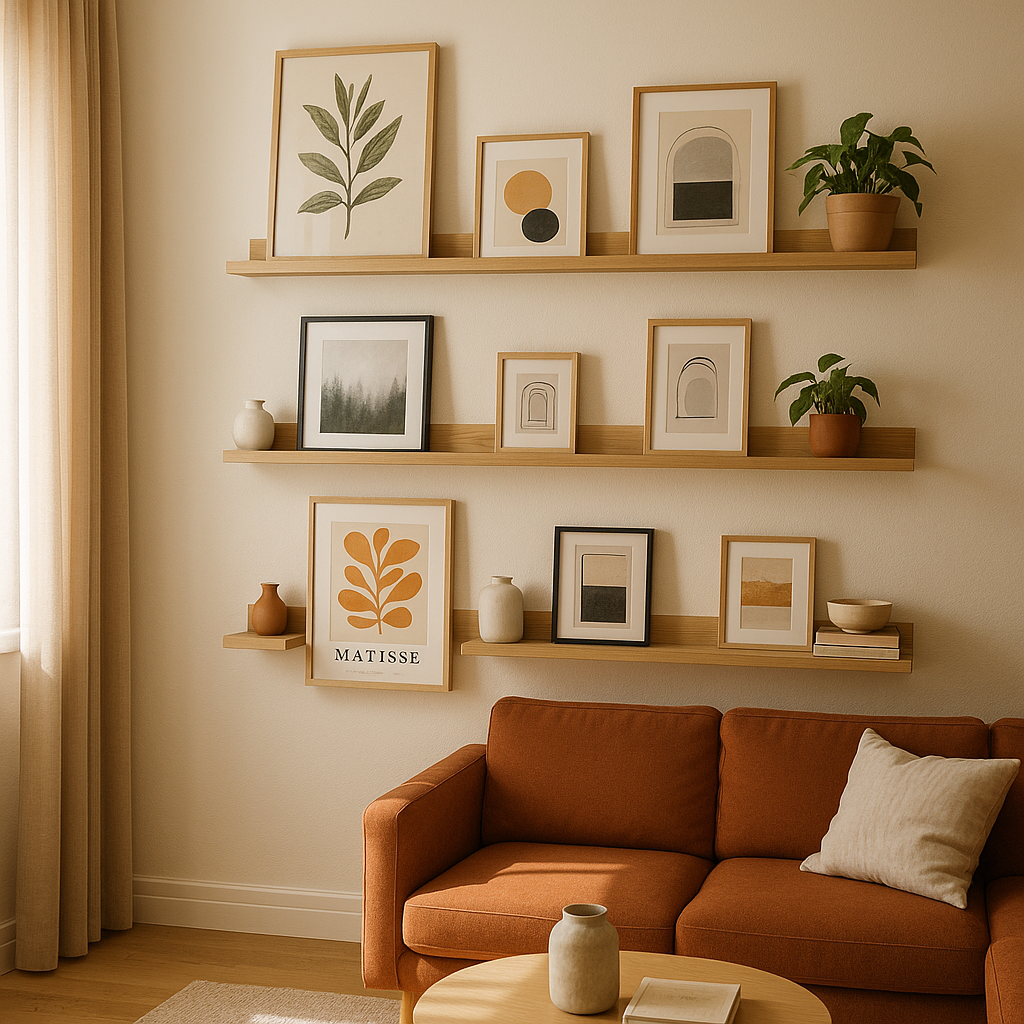
The beauty of this approach lies in flexibility—you can easily swap pieces, rearrange groupings, or refresh your display seasonally without putting new holes in your walls.
Picture ledges, a slimmer cousin of floating shelves, are specifically designed for displaying artwork. Their shallow depth and raised edge allow framed pieces to lean safely against the wall while remaining secure. Install several ledges in a horizontal row or vertical column to maximize your display options. Interior designers often recommend varying the heights and sizes of artwork on ledges to create visual interest while maintaining a cohesive look.
Mantels, bookshelves, and even tabletops can serve as mini-galleries in compact homes. Try leaning a statement piece against the wall on a console table, or create a tabletop vignette with a small framed print, a sculptural object, and a potted plant. This approach to styled shelves lets you integrate art into your everyday living spaces without sacrificing precious wall real estate.
Even unexpected places like the tops of kitchen cabinets or bathroom shelving can become art display zones. Small artworks or prints in moisture-resistant frames can bring personality to utilitarian spaces that are often overlooked in decorating schemes.
Make the most of awkward & unused spaces
Small homes often come with architectural quirks—narrow hallways, awkward recesses, and transitional spaces that seem challenging to decorate. However, these overlooked areas can be transformed into dynamic zones for art display with a bit of creative thinking.
Hallways present perfect opportunities for creating linear galleries.
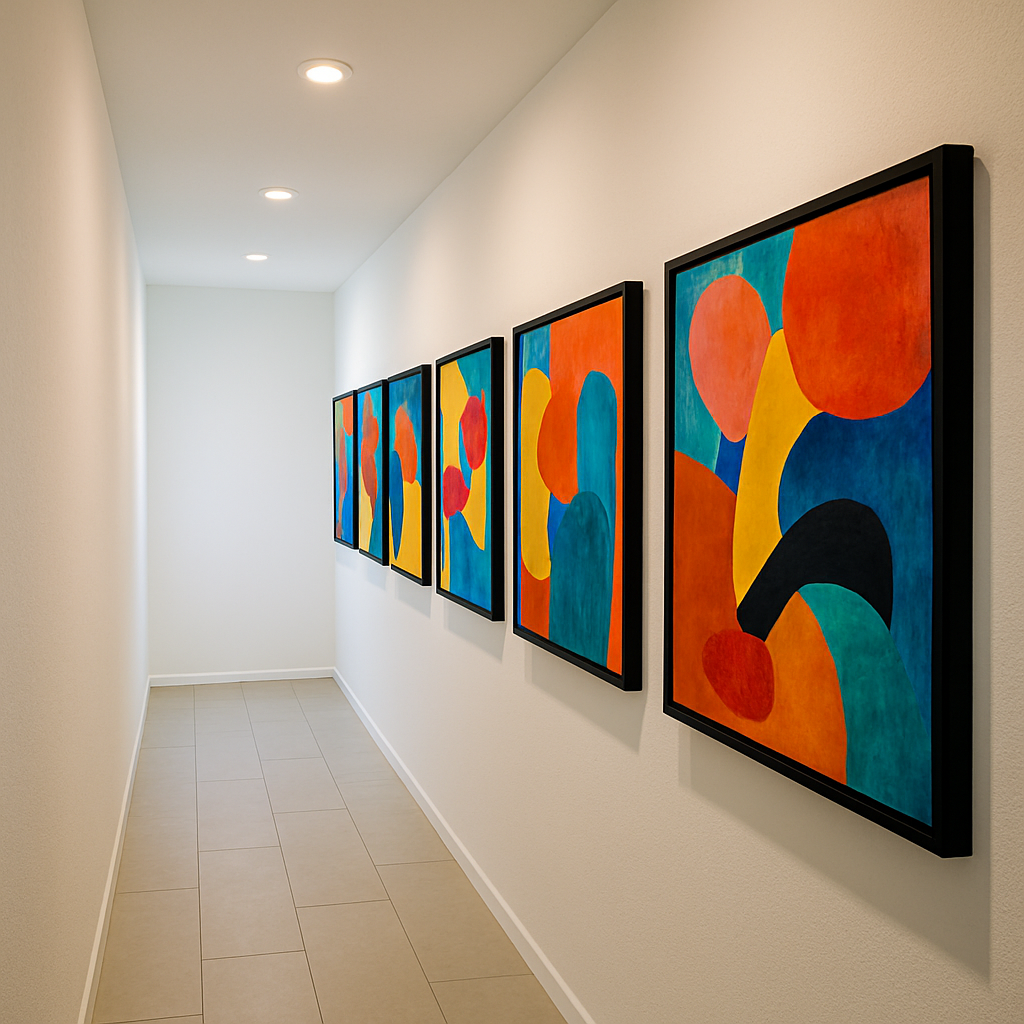
Though narrow, these transitional spaces offer wall space that’s viewed regularly, making them ideal for displaying collections of similarly sized or themed artwork. Consider an art gallery hallway with matching frames for cohesion, or experiment with a salon-style arrangement that grows organically as you add new pieces. The vertical orientation of hallways naturally lends itself to vertical art arrangements, making this approach one of the most effective ways to hang art in small spaces.
The small wall between windows, next to doors, or beside built-in features often goes unused. These compact areas work wonderfully for individual statement pieces or tiny art installations. A bold Bauhaus wall art with colorful geometric patterns can transform these awkward spaces into intentional design features that draw the eye and add visual interest to your room.
Don’t forget about the space above doors—this overlooked area can accommodate horizontal artwork that adds dimension to your room without encroaching on usable space. Similarly, alcoves and recessed areas can be enhanced with carefully chosen pieces that turn architectural oddities into display opportunities.
Corners present unique challenges but also special opportunities for three-dimensional thinking. Consider corner shelving units specifically designed to fit these spaces, or experiment with arranging smaller framed pieces at right angles to one another for a display that wraps around the corner, creating visual continuity between walls.
Staircase walls offer another prime location for creative display. The ascending line naturally created by stairs provides a ready-made template for arranging artwork in a dynamic, rising pattern that guides the eye upward. Even in small homes, this often-ignored transitional space can become a feature wall that showcases your personality.
Flexible and modular art display solutions
When square footage is at a premium, adaptability becomes essential. Modular and flexible display systems allow you to showcase your artwork while maintaining the ability to reconfigure your space as needed—a crucial advantage for small homes that often serve multiple purposes.
Picture rails offer an elegant solution for hanging artwork without committing to permanent nail holes. These horizontal rails mount once to your wall, then allow you to hang multiple pieces from nearly invisible wires or cords. You can easily slide pieces horizontally along the rail to create new arrangements or swap artwork without damaging walls—perfect for renters or those who enjoy frequently refreshing their displays. This portable art studio approach lets you transform your living space into a gallery when desired, then modify it for other purposes.
Pegboards have evolved from workshop staples to sophisticated display systems.
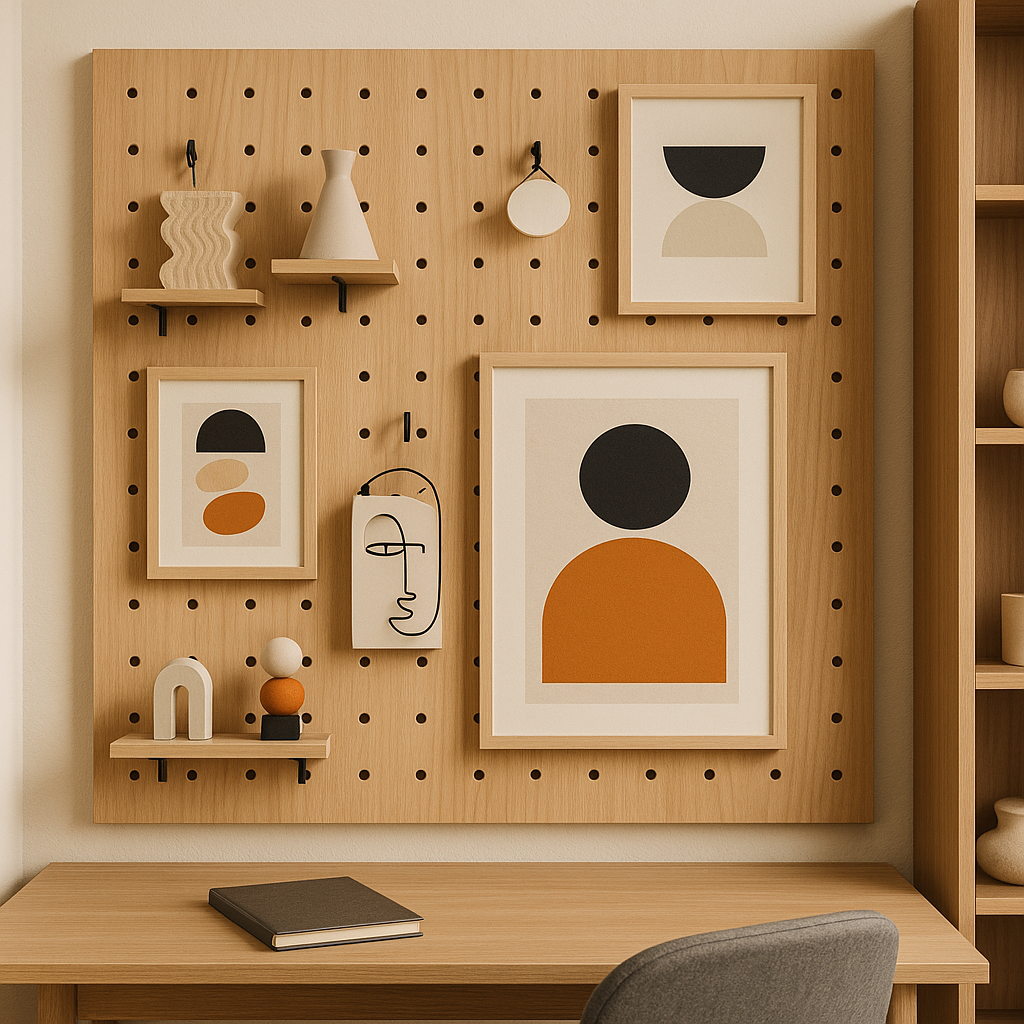
These perforated panels come in various materials and finishes, from classic wood to modern acrylic, and can be cut to fit almost any wall space. With customizable hooks, clips, and shelves that can be repositioned at will, pegboards create endlessly adaptable display surfaces. Artists like Vivienne Bradshaw use similar systems in their own compact studios, noting that the flexibility allows them to visualize new combinations and arrangements before committing.
Mobile art carts represent another clever solution for those with truly limited wall space. These foldable art displays can be wheeled out when you want to enjoy your artwork or share it with guests, then tucked away when you need the floor space for other activities. Many professional artists working in confined urban apartments utilize this approach to maximize their living and studio spaces.
Easels aren’t just for artists—tabletop versions make charming displays for small artwork while adding dimensional interest to surfaces. A small easel on a bookshelf or side table creates an artist’s studio vibe while keeping your wall space free. Room wall art brings your personality to every space, and these portable solutions ensure you can express yourself even in the most spatially challenged environments.
Modular shelving systems that can be reconfigured as your needs change offer another versatile option. Components that can be rearranged, expanded, or reduced give you control over your display space while accommodating growing collections or changing spatial requirements.
Lighting, layers & personalization
Strategic lighting and thoughtful layering can dramatically enhance the impact of artwork in compact spaces, creating depth and visual interest that makes rooms feel larger and more expressive. When decorating with art in small rooms, these elements become critical to maximizing aesthetic impact.
Natural light provides the ideal illumination for artwork, but isn’t always available in abundance in small spaces. Position important pieces where they can benefit from window light, being careful to avoid direct sunlight that might damage sensitive materials. For artwork in dim corners or during evening hours, consider daylight LED lamps that closely mimic natural light without the damaging UV rays. These energy-efficient options cast artwork in its true colors while creating an inviting ambiance.
Clip-on or clamp lights offer targeted illumination for individual pieces without requiring complex installation or taking up precious surface space. These adjustable fixtures can highlight a special artwork, creating a focal point that draws attention away from the room’s limited dimensions. Art lighting for small spaces needn’t be elaborate—even simple plug-in picture lights mounted above framed works can create gallery-like sophistication.
Layering art creates visual complexity that engages the eye and adds perceived depth to modest rooms.
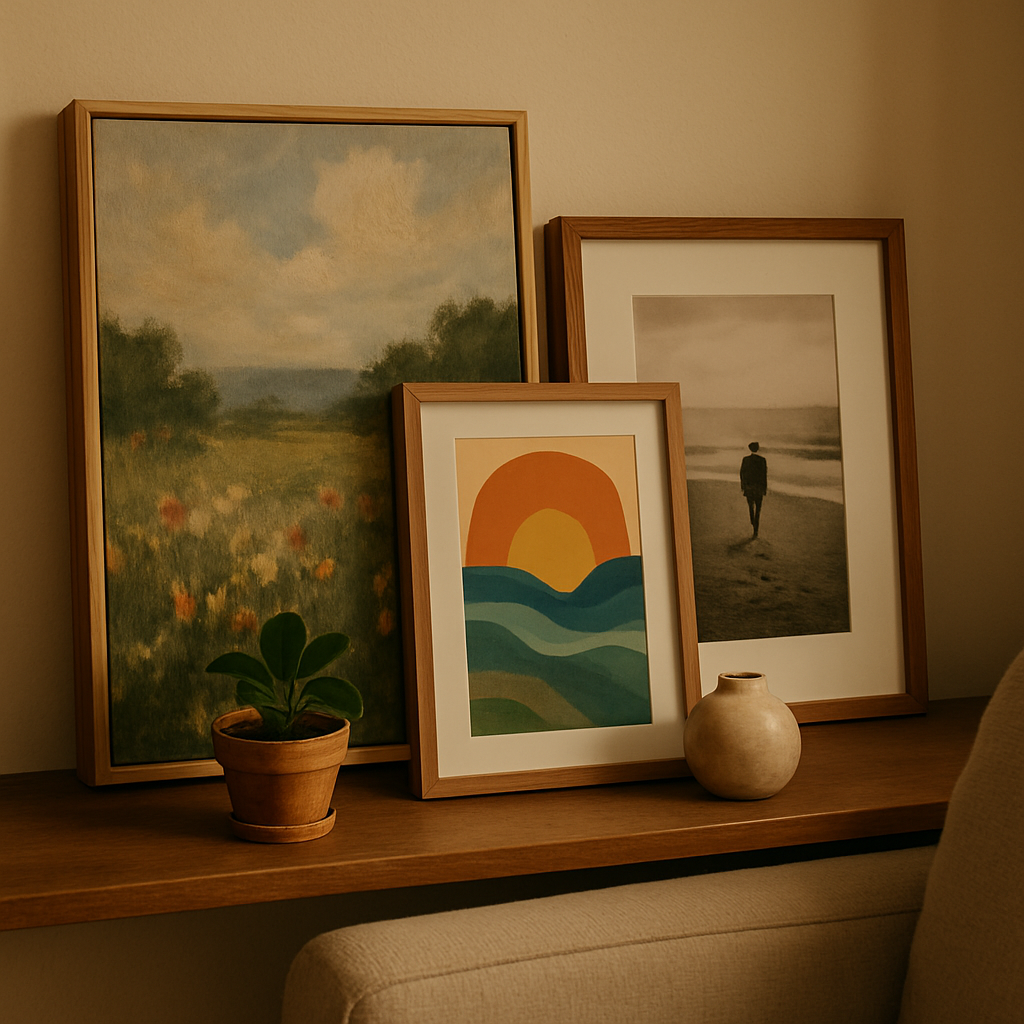
Try overlapping smaller pieces on shelves or mantels, or lean one frame slightly in front of another for a casual, collected look. Mixing different media—photographs alongside paintings, textiles with prints, or ceramics beside sketches—creates textural variety that enhances visual interest in your personalizing art display.
Incorporate personal elements that tell your unique story. A Bauhaus art print with vibrant overlapping squares might sit alongside a treasured family photograph or souvenir from your travels. These juxtapositions create meaningful connections that transform a simple art arrangement into a narrative about your life and interests. Research shows that such personalized environments positively impact well-being and creativity, making them especially valuable in small living spaces where every element should provide both function and meaning.
Don’t forget the power of negative space—even in small rooms, allowing some breathing room around artwork prevents visual clutter. A thoughtfully chosen piece with adequate space around it can make more impact than numerous crowded works competing for attention.
Smart storage and maintenance
Managing an art collection in limited space presents unique challenges. Smart storage solutions allow you to preserve pieces not currently on display while rotating your collection to keep your environment fresh and engaging.
Under-bed storage containers with dividers offer ideal protection for flat artwork, prints, and photographs. These low-profile solutions utilize often-wasted space while keeping valuable pieces dust-free and protected from light exposure. Look for acid-free options if storing original artwork or valuable prints to prevent deterioration over time. This approach to organizing art in small apartments maximizes your collection without sacrificing living space.
Vertical storage racks, designed specifically for artwork, allow framed pieces to stand upright in protective slots. These can be placed inside closets, behind furniture, or in other unused corners to keep your collection accessible but out of the way. Professional artists often use similar systems to manage inventory in compact studios.
Rolling carts with multiple shelves provide flexible art storage solutions that can be moved where needed. These mobile units can store art supplies, works in progress, and pieces awaiting display, then tuck away into closets or under desks when not in use. The portability factor makes them especially valuable in homes where space functions must change throughout the day.
Portfolio cases and archival boxes protect unframed works while stacking neatly on shelves or in cabinets. Labeled clearly, these storage systems allow you to categorize your collection for easy retrieval when you’re ready to rotate pieces.
Digital alternatives offer revolutionary options for small-space art lovers. Digital art frames allow you to display hundreds or even thousands of images in a single frame through programmable slideshows. These technological solutions let you enjoy an extensive collection without the physical storage requirements. Similarly, projection systems can transform blank walls into temporary galleries that change at the touch of a button.
Consider creating a rotation schedule for your displayed artwork. Seasonal changes or monthly refreshes keep your environment stimulating while allowing you to enjoy your entire collection over time. This practice not only maximizes your enjoyment of various pieces but also protects artwork from extended light exposure.
For artists with supplies to manage, drawer organizers, wall-mounted tool racks, and magnetic boards can keep materials accessible without claiming valuable surface space. Thinking vertically about storage maximizes floor space while keeping creative tools within reach.
Conclusion
Living with limited square footage doesn’t mean sacrificing artistic expression or visual stimulation. By embracing creativity, flexibility, and personalization, you can create impactful art displays that enhance your compact home while reflecting your unique personality and style preferences. Experiment with alternative surfaces, reclaim overlooked spaces, invest in adaptable display systems, and use thoughtful lighting to maximize the impact of each piece.
Remember that the most successful small-space art arrangements reflect intentionality rather than limitation. Each piece should earn its place through meaning or beauty, creating a curated environment that feels both expansive and deeply personal. Whether you’re drawn to bold modern prints, vintage photography, or traditional paintings, there are countless ways to incorporate meaningful artwork into your small space.
As you implement these strategies, allow yourself to experiment and evolve your displays over time. Your home should grow with you, reflecting new interests, travels, and creative discoveries. With these approaches, your compact living space can become a dynamic, ever-changing gallery that continually inspires and delights both you and your visitors.
FAQ
How can I display art if I rent and can’t put holes in the wall?
Try picture ledges, removable adhesive hooks, tabletop easels, or leaning art against walls and shelves. These preserve your deposit and allow for easy updates.
What types of art work best in small spaces?
Compact prints, vertical arrangements, diptychs/triptychs, and bold graphic works help maximize visual impact without overpowering a room.
How do I prevent my small space from looking cluttered with art?
Group pieces cohesively by color or theme, use uniform frames, leave negative space between items, and rotate artwork seasonally to keep displays fresh.
Is it possible to create a mini-gallery wall in a really tight area?
Absolutely—narrow strips, corners, or columns (between windows/doors) can support creative gallery walls using small-scale art or a vertical lineup.
What’s the best way to light my artwork in a windowless room?
Use daylight-balanced LED bulbs in clamp or clip-on lamps, or wall-mounted spotlights to evenly and attractively illuminate your art.